It’s a warm evening and the sun is setting over the savannah, casting a golden glow behind the marula trees. A cloud of dust appears on the horizon — an open safari vehicle comes into view, carrying a pair of Aussies eager to see the African animals of Kruger National Park.
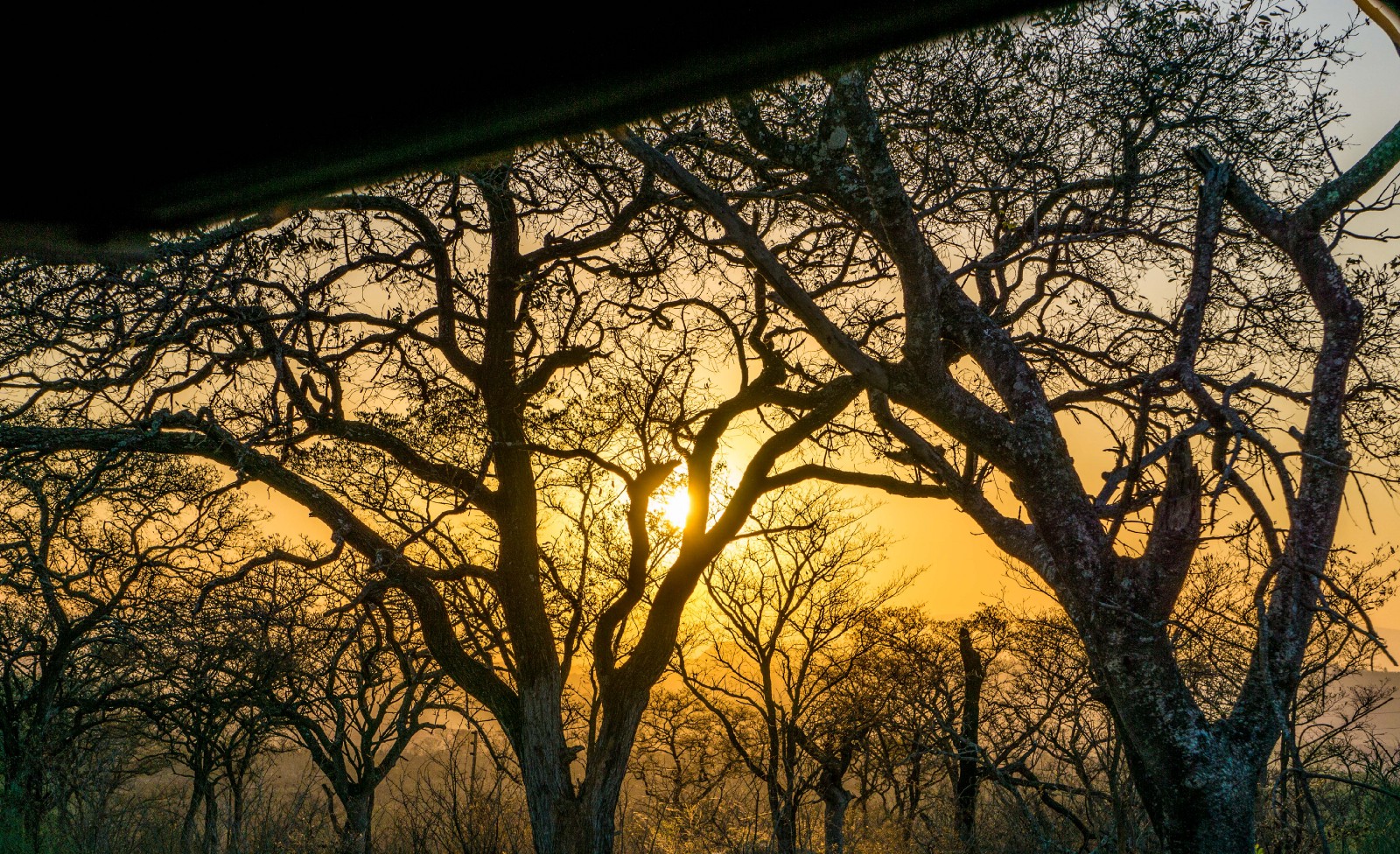
One of the many beautiful sunsets in Kruger
But only a few hours earlier, Dylan and I were sat on the side of the road somewhere between Johannesburg and Kruger National Park. We had left our hotel in Johannesburg at around 7am and were about one hour into the 4 hour drive to Kruger when the fan belt in the bus blew. So until a replacement bus arrived we were left on the side of the road, longing for our safari adventure. But we eventually arrived late that afternoon, and fortunately had time for a quick sunset drive.
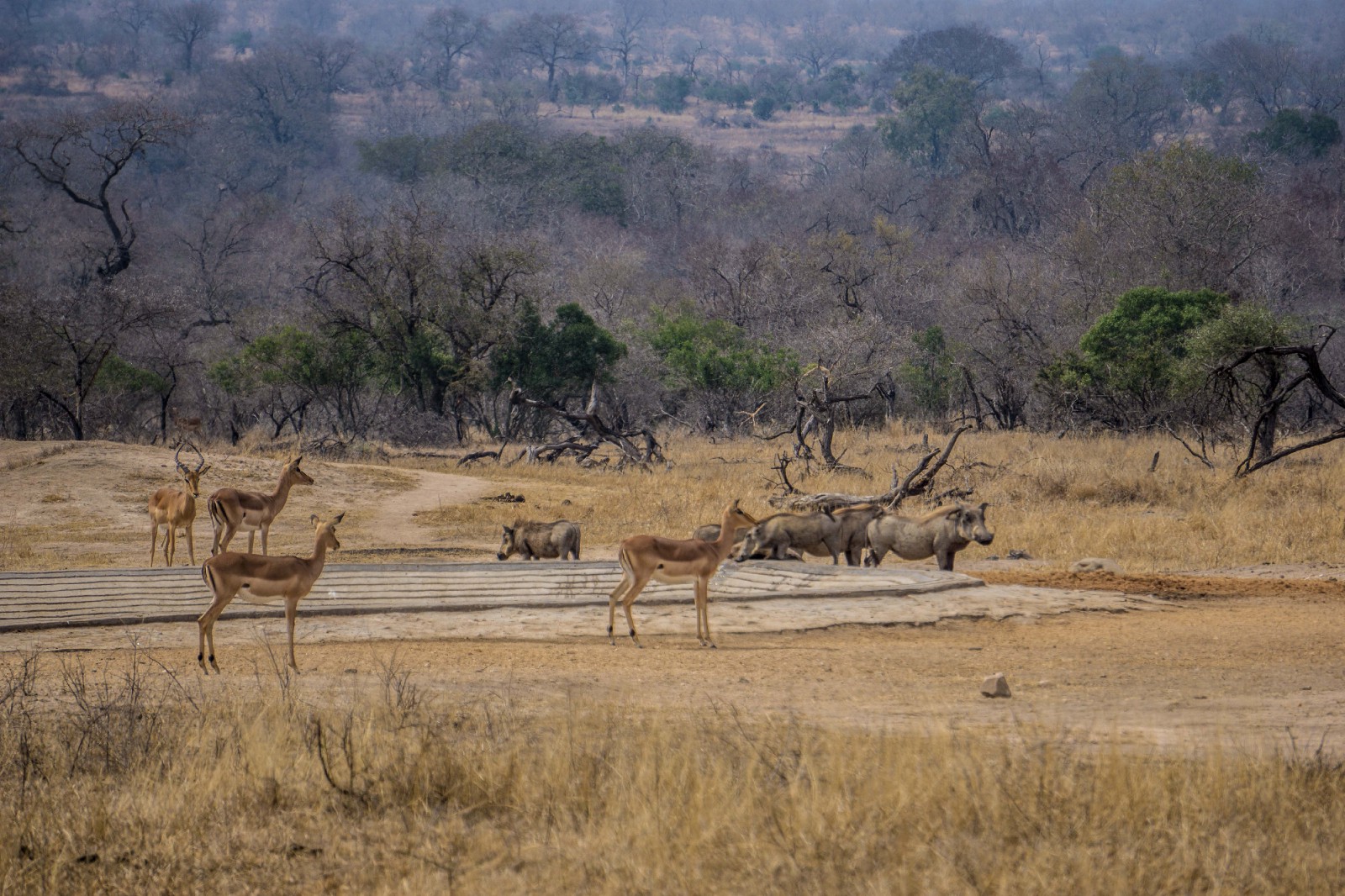
Everyone chilling down by the local waterhole (including Pumba)
The park is beautiful at that time of day. In fact, the best times to be in the park are early morning and evening as the animals are more active because it is too hot during the day. In that short sunset drive we saw zebras, elephants, giraffes and impalas.
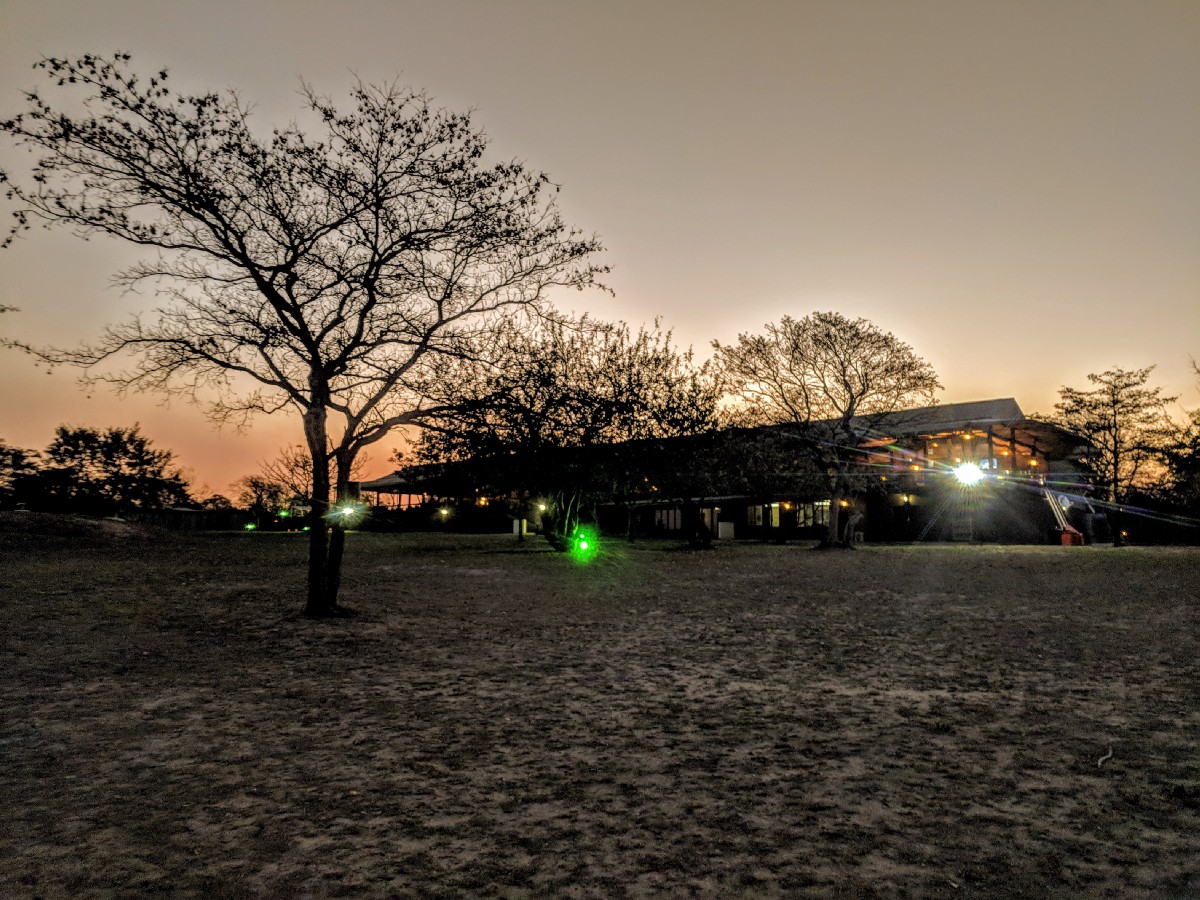
Looking back at the restaurant of the Nakambi lodge from the waterhole
We then went to our accommodation at the Nkambeni Safari Camp. This was a really nice place with lovely tented lodges. The camp is located on the south-western edge of the park at the Numbi Gate entrance to Kruger. It is surrounded by beautiful scenery and the wildlife come right to the edge of the camp, which is enclosed with an electrified fence.
The animals do not tend to be bothered by the safari vehicles and so after spending days driving among their habitats, it is easy to forget that they are wild animals and that the fence is indeed necessary.
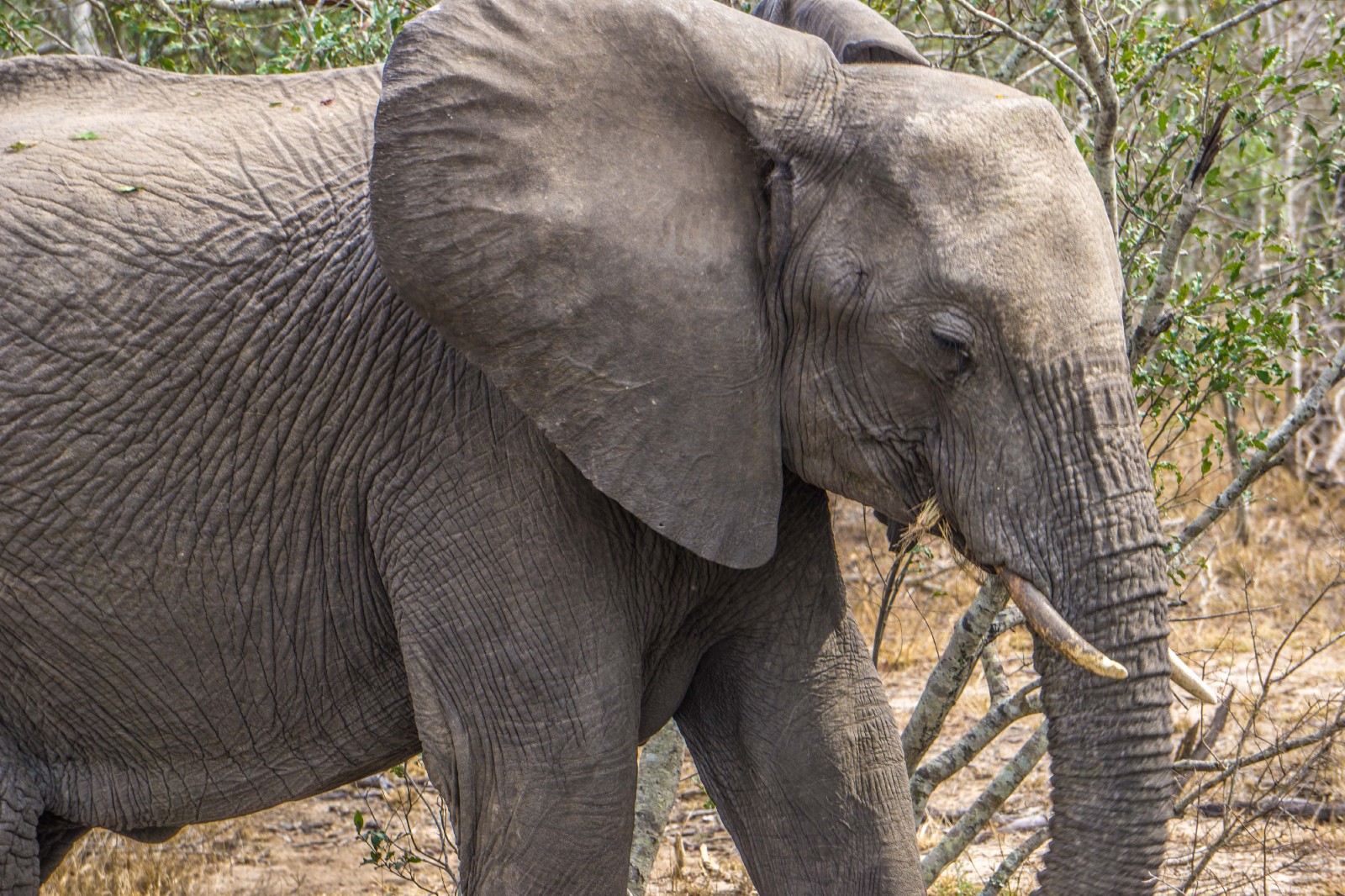
There was a waterhole at the back of the property that was home to three hippopotamuses. In the evenings after our safari drives we took a cider down to the waterhole to watch the sun go down and listen to the hippos. It was very peaceful despite the loud snorting and groaning of our neighbours.
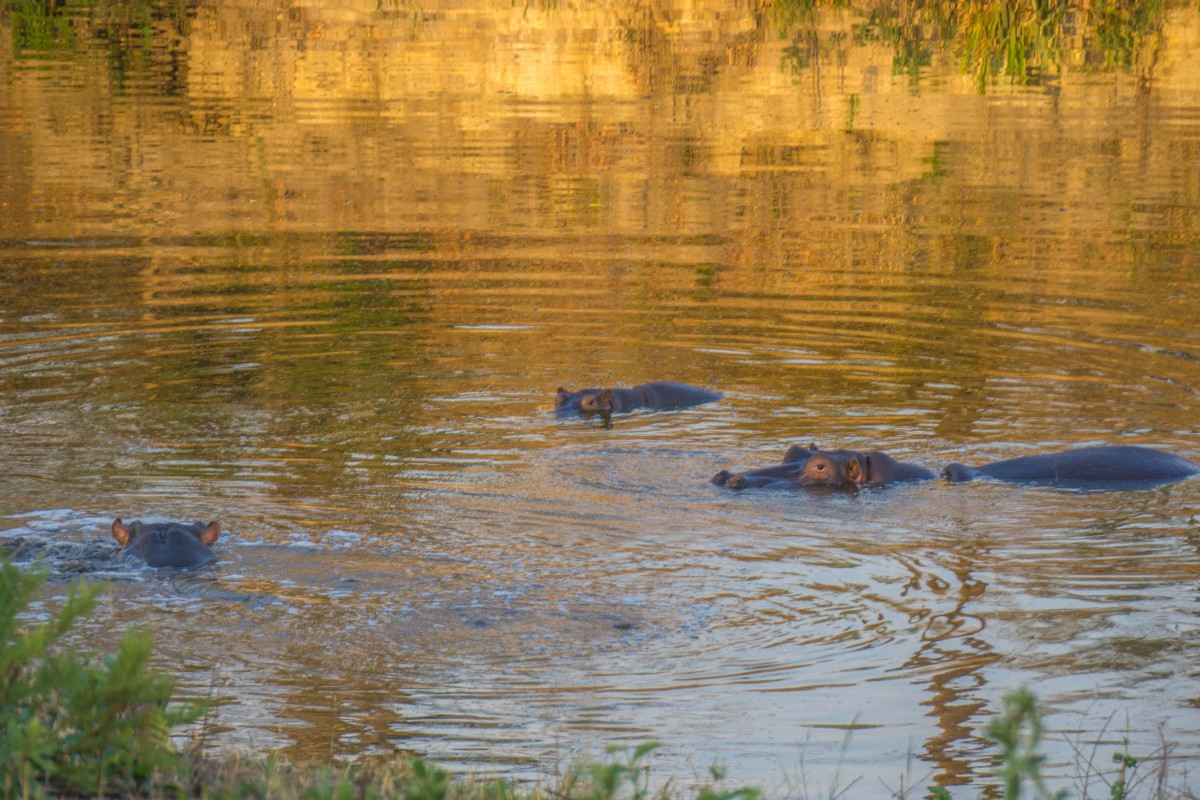
The hippos in the waterhole behind our lodge
One evening while we were down there enjoying our cider and the hippos, a family of elephants came to to bath and drink at the waterhole. It was magical to be able to sit so close to them and watch them in their natural habitat. At one point, one of the baby elephants came so close to the fence that I could have reached out and touched its trunk.
When we were researching our trip we had read that safari can be boring at times because you are sitting in the vehicle all day and may go hours without seeing any animals, and so we decided to book a 4 day adventure package, which was one full day safari, two half days, and a day of non-safari activities. But, as it turned out, we loved every minute of it and wished we had spent longer on safari. Even just driving around the park without seeing animals was amazing. The park is beautiful and in any case, I don’t think we experienced any length of time without seeing something.
On our second day in the park we had very good luck with sightings — almost certainly helped by our amazing guide, Amanda, who had a knack for finding even the most elusive animals. Relatively early in the day we received a radio call from one of the other guides that they had seen two leopard cubs so we drove over to the location and waited. There are only about 250 leopards left in the park and they are very difficult to find.
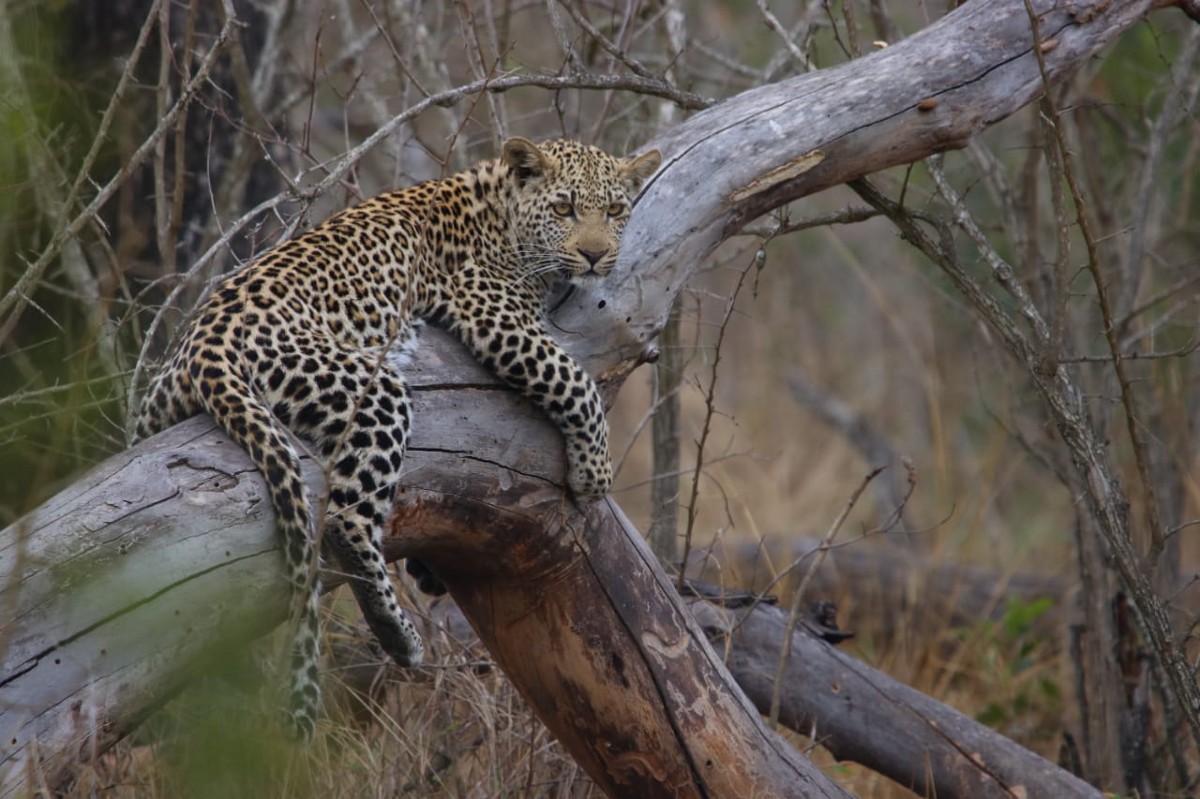
One of the leopard cubs lying on the dead tree trunk
At first, we just saw an occasional flash of the cubs when they jumped in the air while playing with each other. But Amanda encouraged us to wait with the hope that they might eventually move into better view. And so we waited. And with some amazing luck they moved out from behind the trees and climbed up a dead tree trunk right in front of our line of sight.
We had close to a full minute watching them playing there before the tree trunk broke from underneath them and they disappeared into the thick of the trees. It was breathtaking to watch them for those few moments. The next day we saw another leopard sleeping in the shade of a rock, but after some waiting we left, as she seemed settled in for a nap.

The leopards playing just before the tree trunk broke and they disappeared
On our third day we did our non-safari activities, which were zipline and white water rafting. We were under the impression that we would be in a raft with a guide, but it turned out that Dylan and I had a raft to ourselves as the guides were with other guests. We had no idea what we were doing so regularly ended up going backwards down the rapids or getting stuck sideways on rocks. It was really hard work to try and paddle the boat through the rapids. But as it turns out, that was the least of our worries. When we were rafting, one of the guides would go ahead and start slapping the water with his oar. He was checking for hippos and crocodiles…. T.I.A.
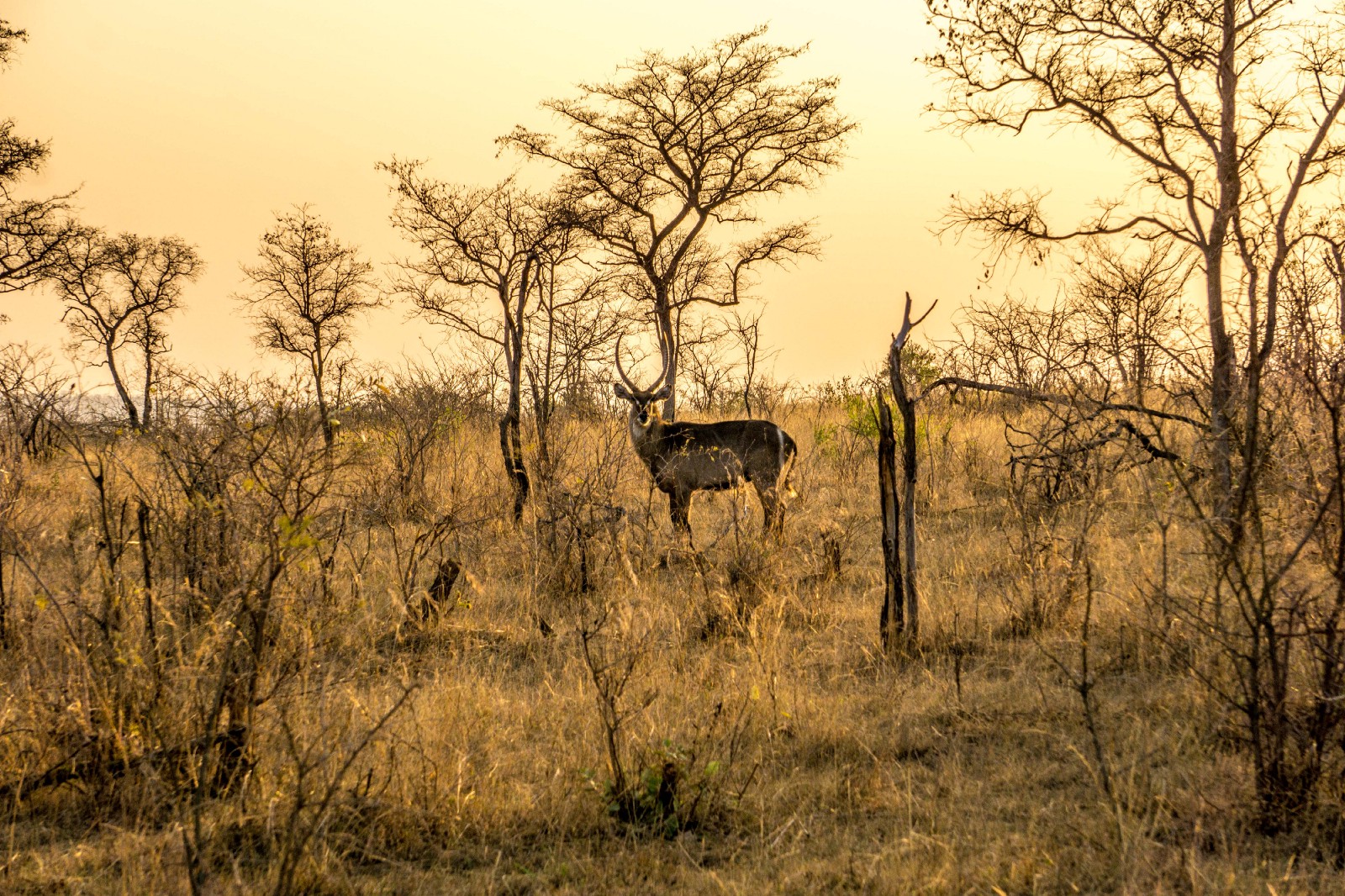
A beautiful male waterbuck at sunrise at the edge of the safari camp
On our last morning we had the best luck of all with sightings, as we were able to see two incredibly rare animals. The first is notoriously elusive and very difficult to spot even when you know it’s there — the cheetah.
We were driving along the edge of the savannah grassland and there was a beautiful female cheetah walking through the grass about 50m in from the road. She was difficult to follow, but you could not miss the unmistakable shape sensuously slinking through the long grass. There are less than 150 cheetahs left in the park and they are very rarely sighted. I didn’t get a photo, but just to be able to see one was incredible.
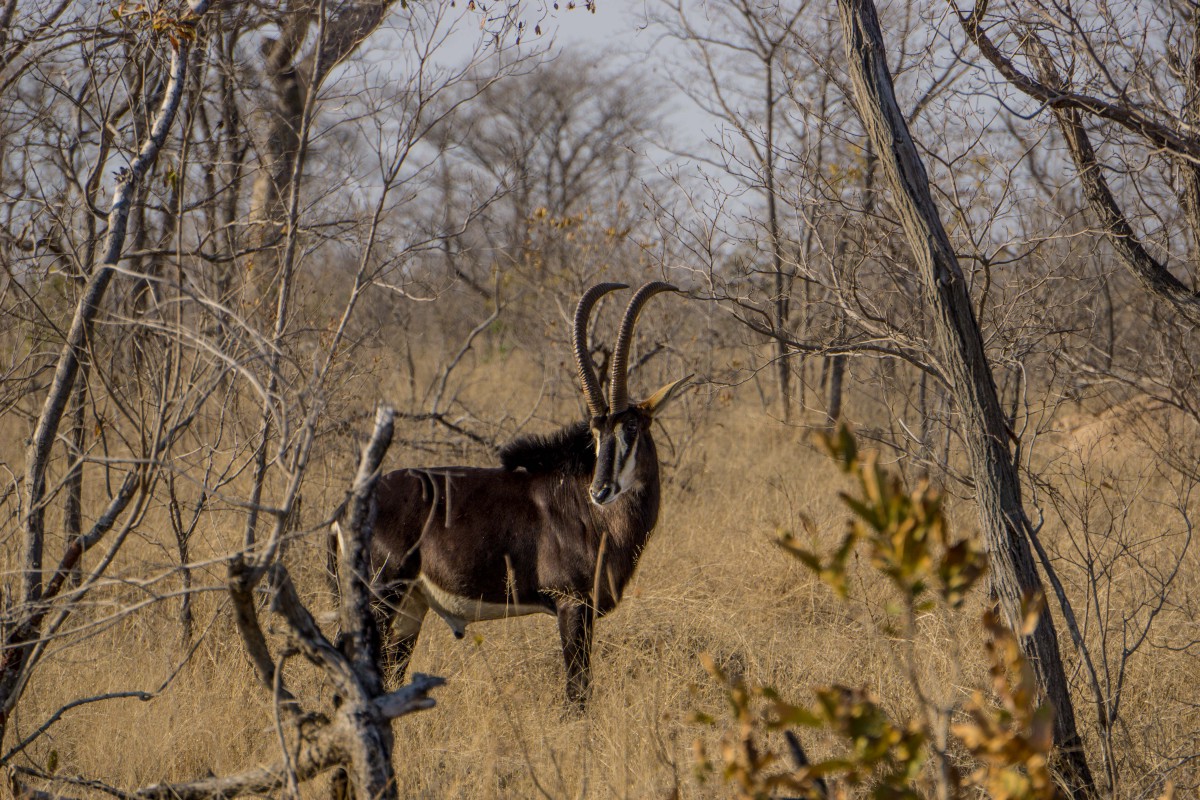
A rare sable antelope
The other extremely lucky sighting we had that morning was of the sable antelope.
There are less than 120 in the park, and we came across a herd of about 15 of them grazing in the early hours of the morning. They have a dark velvety coat and a beautiful pair of aesthetically arched horns.
We bought a little book from one of the tourist shops that shows pictures of all the animals in Kruger with little checkboxes so that you can mark off the animals you sight. At the end of our safari trip we had a total of 56 different animals of which 34 were birds.
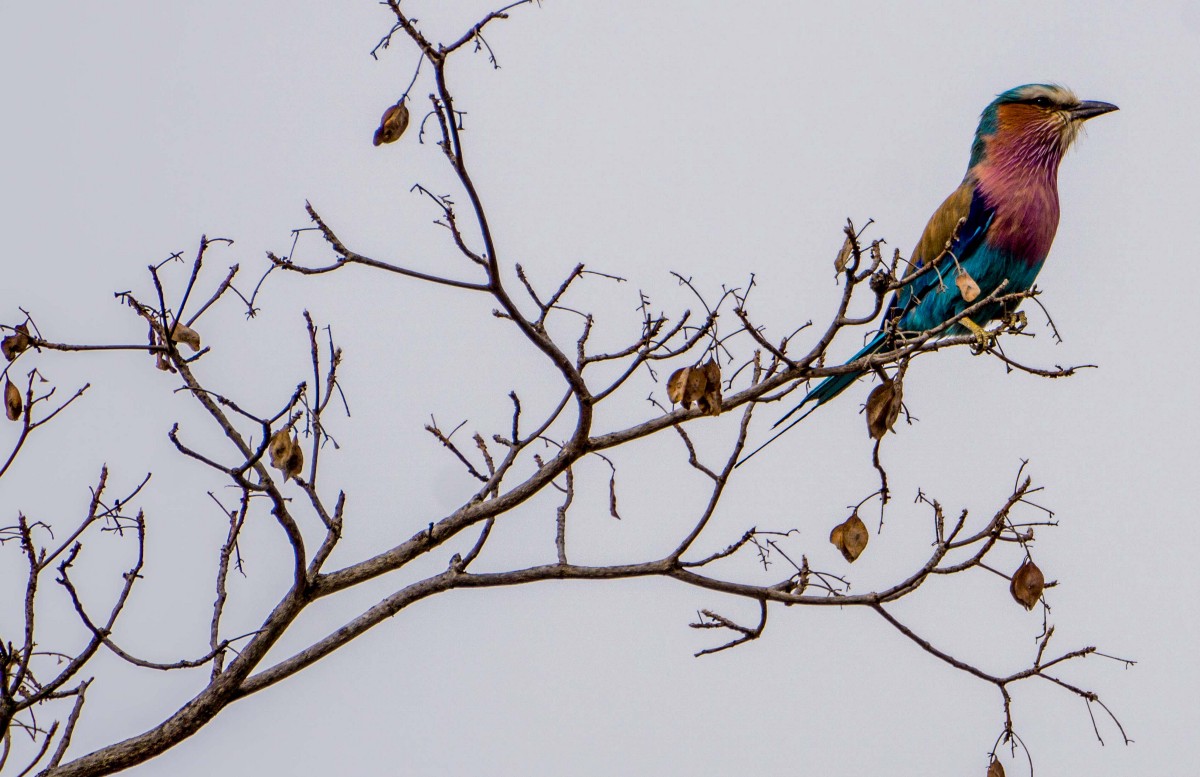
The beautiful lilac-breasted roller
Of course, Dylan was in his element with all the birds. We saw birds of prey like the large Fish Eagle and the rare Lappet-faced Vulture. The one I was most excited to find was the brightly coloured lilac-breasted roller. Getting good photos was hard because the birds rarely sat still long enough and my zoom lens is only 210mm.
We loved our safari. In fact, we are now addicted to safari. Dylan eagerly peered through his binoculars in a continuous effort to spot new animals, and when we found them I took all the photographs I possibly could before the animal would inevitably disappear back into its surroundings. What an experience. We are already planning our next one!
If you would like to learn more, please play with the interactive tour of our safari below 🦁